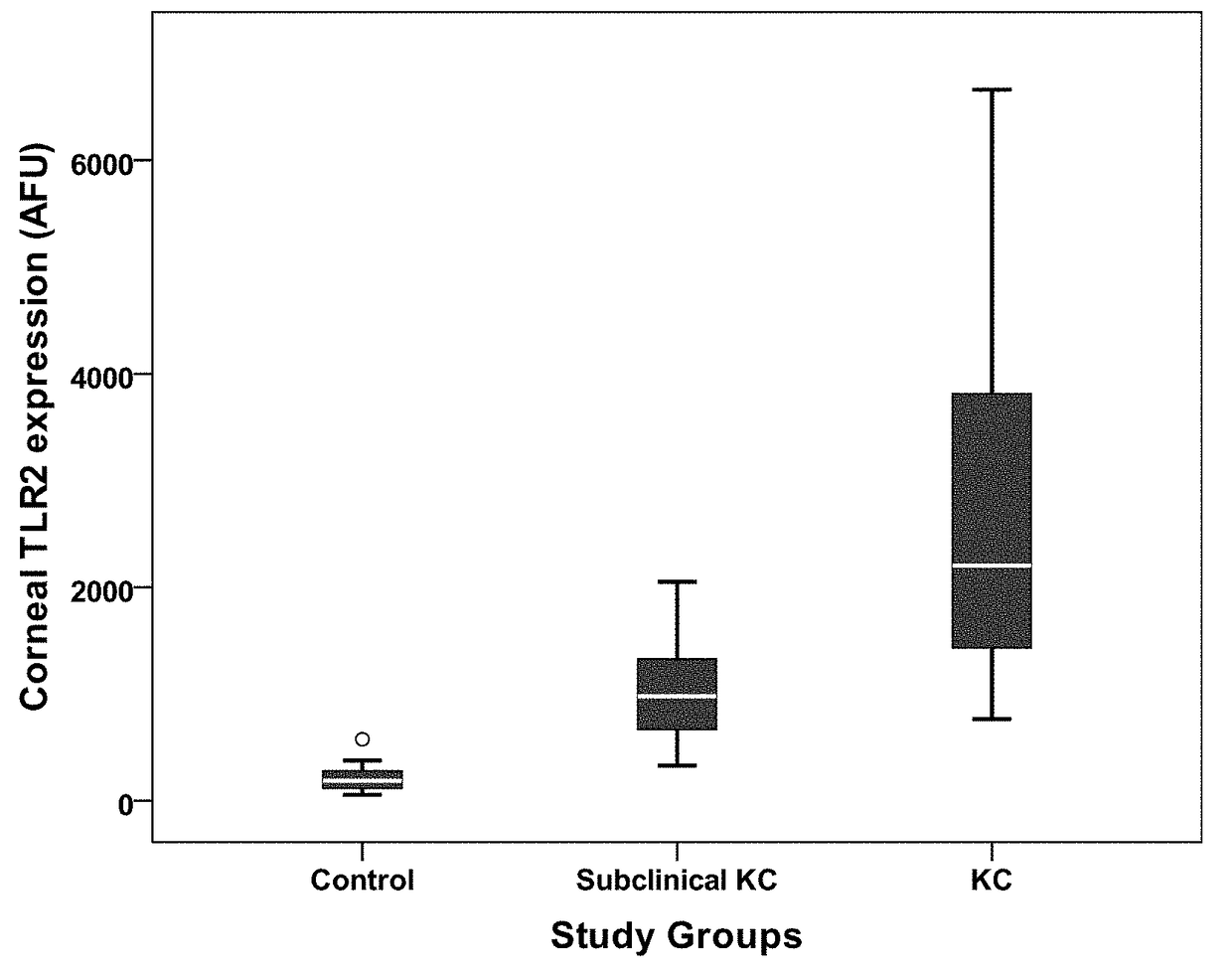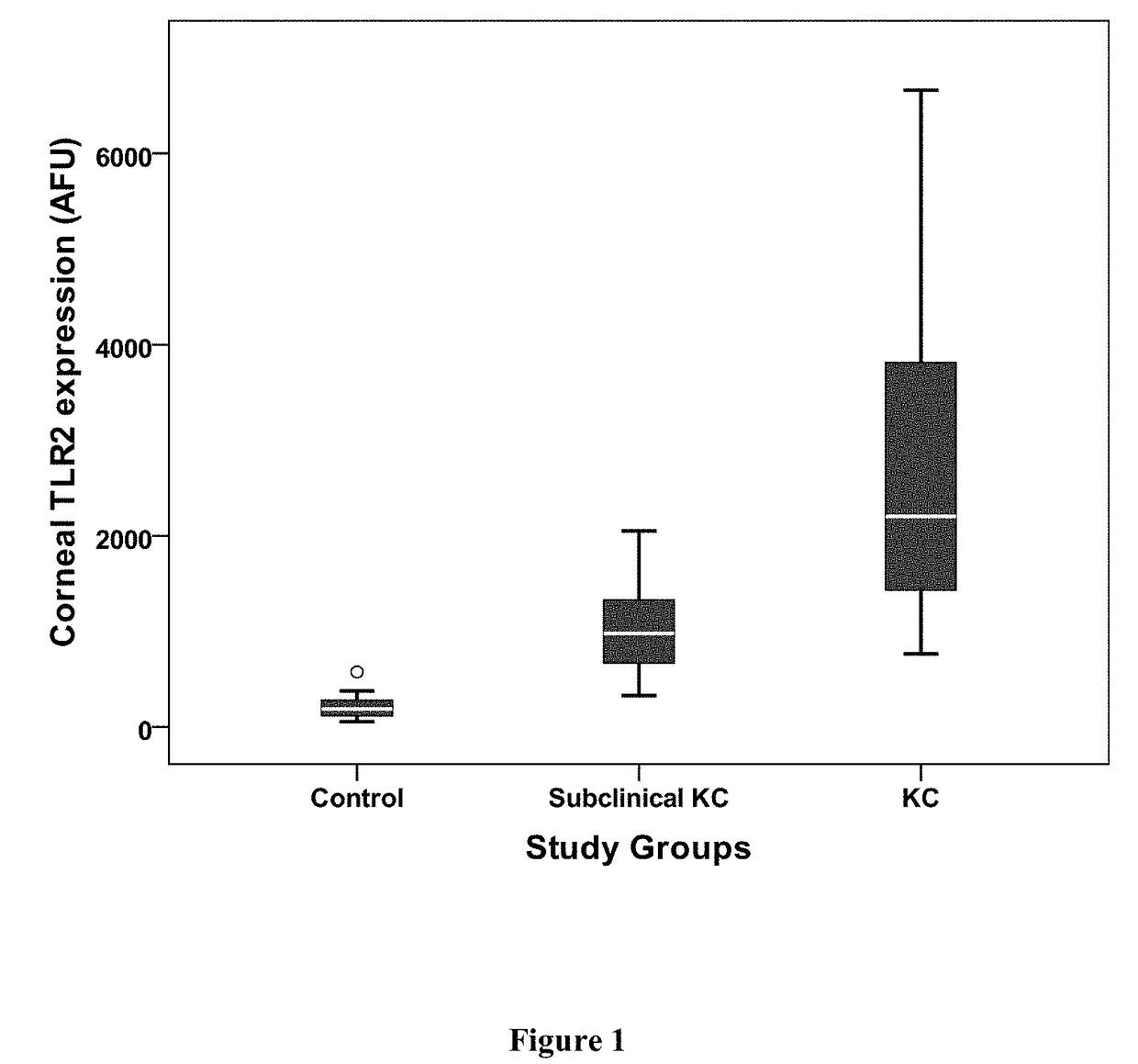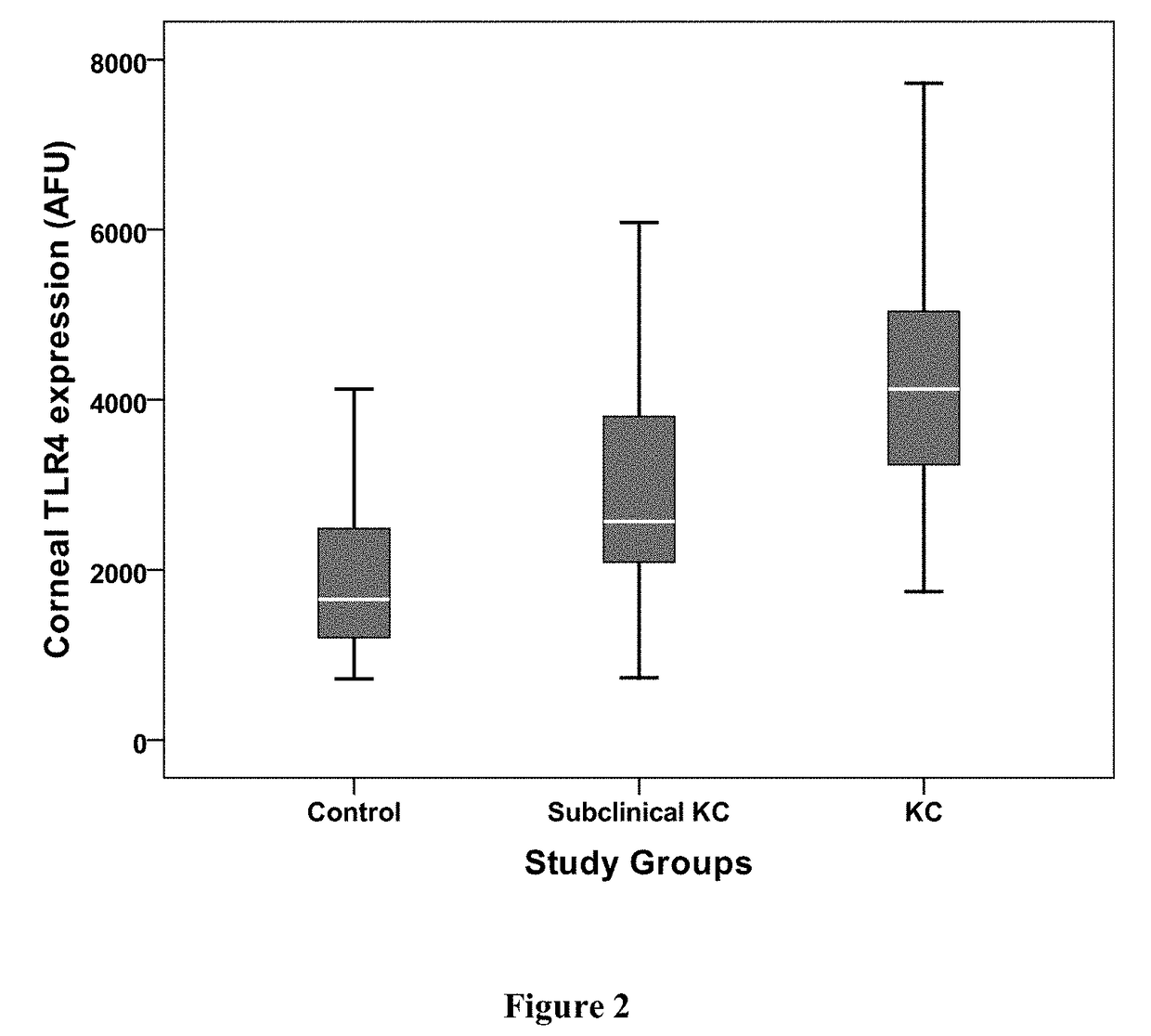Biomarkers for diagnosis and prognosis of corneal ectatic disorders
a biomarker and corneal ectasia technology, applied in the field of molecular diagnosis and prognosis methods for pathologies, can solve the problems of complicated use, adversely affecting the structural integrity of the cornea, and threatening vision from refractive surgery ectasia
- Summary
- Abstract
- Description
- Claims
- Application Information
AI Technical Summary
Benefits of technology
Problems solved by technology
Method used
Image
Examples
example 1
Clinical Features for Cohort A
[0236]No gender-related statistical differences were detected between the study groups, however patients with KC were older and sowed more frequent history of KC (Table 1). The elapsed time from the first diagnosis of KC eye ranged from 1 to 30 years (mean, 8.3±6.2 years). Twenty-three KC patients (46%) and 19 control subjects (51.4%) reported allergy disease and 15 KC patients (30%) a family history of KC. Thirteen control subjects (35.1%) and 31 patients (62%) reported itchy eyes. For patients who reported itchy eyes, 71% admitted frequent and vigorous eye rubbing on the KC eye. Thirteen control subjects (35.1%) also reported eye rubbing.
[0237]Table 1 shows the mean K2 values for all study groups. Mean K2 was higher in the KC eye versus the other study groups (p<0.0001).
Descriptive Study
[0238]
TABLE 1Baseline clinical characteristics and TLR conjunctival andcorneal cell expression in study groups of cohort A.VariableControlSubclinical KCKCp valueAge (y...
example 2
Clinical Features for Cohort B
[0249]No gender-related statistical differences were detected between the study groups, however patients with PMD were older and KC patients showed more frequent history of ectatic disorders than control subjects and PMD patients (table 4). Twenty-eight KC patients (65%), 6 PMD patients (46%), 9 relatives (39%) and 14 control subjects (41.2%) reported allergy disease. Likewise, the 88% of KC patients, 84% of PMD patients, 39% of relatives and 26% of control subjects reported itchy eyes. For patients who reported itchy eyes, the 76% of KC patients, 76% of PMD patients, 35% of relatives and 35% of control subjects admitted frequent and vigorous eye rubbing on the KC eye.
[0250]Table 4 shows the median K2, central K, minimum thickness point and posterior elevation values for all study groups. Median K2 and central K were higher in the KC eyes versus the other study groups (p<0.0001). Likewise, posterior elevation was higher in the KC and PMD eyes versus con...
PUM
| Property | Measurement | Unit |
|---|---|---|
| thickness | aaaaa | aaaaa |
| focal length | aaaaa | aaaaa |
| time | aaaaa | aaaaa |
Abstract
Description
Claims
Application Information
 Login to View More
Login to View More - R&D
- Intellectual Property
- Life Sciences
- Materials
- Tech Scout
- Unparalleled Data Quality
- Higher Quality Content
- 60% Fewer Hallucinations
Browse by: Latest US Patents, China's latest patents, Technical Efficacy Thesaurus, Application Domain, Technology Topic, Popular Technical Reports.
© 2025 PatSnap. All rights reserved.Legal|Privacy policy|Modern Slavery Act Transparency Statement|Sitemap|About US| Contact US: help@patsnap.com



